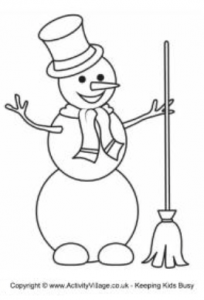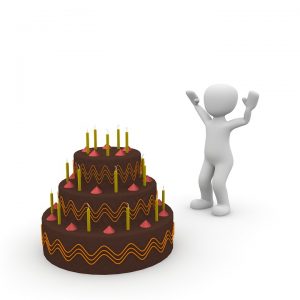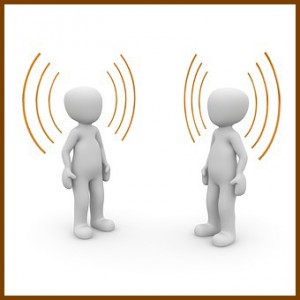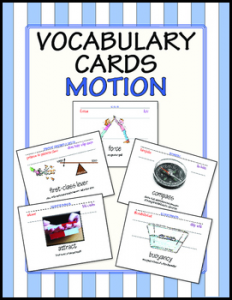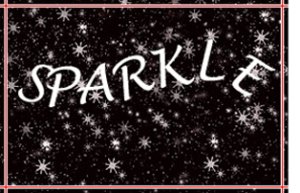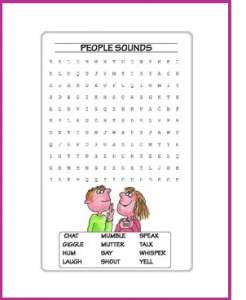UPDATE: These fun resources now require a membership. You’ll be asked to pay £17.50 for a full year of access. Need a few puzzles, mazes, or drawing activities with a winter or Christmas theme? I found a few just for you! Pick the ones that best fit your students interests and abilities from Activity Village in the UK. If you’re interested in puzzles specifically about winter, I’ve included those as links after each type of puzzle – I hope this saves you time looking for just what you need! Stepping Stone Puzzles Counting Puzzles – stars Find the differences – snowmen Grid Copy Puzzles – snowflake …
  Why doesn’t “a piece of cake” simply mean a yummy dessert? Why does it also mean a task that’s very easy? What about “let them eat cake“, “slice of the pie“, or “icing on the cake“? “Half-hearted” means lack effort or enthusiasm. “Big deal” means something important or consequential. “Wake up” means, well, stop sleeping! All these idioms mean something very different than their literal interpretation. Idioms can be a challenge for English language learners because they’re not literal. They can be puzzles to solve for all students in your classroom. I just posted seven new products that are …
Poetry can be a great way to integrate language arts with science! Here are suggestions for connecting science and poetry when your students are studying light, reflection, refraction, shadows, or rainbows! Something Big has Been Here, Jack Prelutsky “Denson Dumm” A Light in the Attic, Shel Silverstein “BATTY” “SHADOW RACE” “SIGNALS” Every Thing On It, Shel Silverstein “THE RAINBOW THROWER” Where the Sidewalk Ends, Shel Silverstein “AFRAID OF THE DARK” “JOEY” “IT’S DARK IN HERE” Do you have poems about light to share with us?
Here are several poems that feature sound written by familiar poets whose books, if not already on your shelf, might be found at your local library or poems online! A Light in the Attic, Shel Silverstein “DEAF DONALD” “MY GUITAR” “ROCK ‘N ROLL BAND” Every Thing On It, Shel Silverstein “HORN” Falling Up, Shel Silverstein “MUSIC LESSON” “NOISE DAY” “SCREAMIN MILLIE” Where the Sidewalk Ends, Shel Silverstein “WHAT A DAY” The Butterfly Jar, Jeff Moss “The First Musician” “Rachel” A Pizza the Size of the Sun, Jack Prelutsky  “We’re Loudies” Something Big has Been Here, Jack Prelutsky “Benita Bean” “Don’t Yell at Me” …
Teaching a unit about force? Poetry can be a great addition to your science resources. Read about ten ways to use poetry in your classroom from Reading Rockets. In addition to my list of poetry by Shel Silverstein, here are suggestions for poems you might consider sharing with your students. The Butterfly Jar, Jeff Moss force: “London Bridge” A Pizza the Size of the Sun, Jack Prelutsky buoyancy: “We Often Walk on Water” magnetism: “I’m Practically Covered with Needles and Pins” Something Big has Been Here, Jack Prelutsky force: “The Turkey Shot Out of the Oven” These could support activities …
While teaching a university class, my teacher participants asked me about strategies for learning new science vocabulary. What resources could be used to help students learn key words for a new science topic? I created a set of cards for a variety of topics that have an image, a simple definition in English, and the term in English, Spanish, Vietnamese, and Russian. You can choose from: astronomy, birds, wild cats, frogs, geology, insects, motion, weather, and whales. Consider these other resources: Increasing vocabulary is an accomplishment. Celebrate mastery of every word!– Marilee Sprenger in Education Week Teacher Rigorous and meaningful vocabulary activities can …
How can we support students who may be frustrated with spelling while keeping it fun for the students who find spelling to be very easy? Each week, for my fourth and fifth grade students, I would assign 10 of the 200 most commonly misspelled words. I put the tricky homophones together, like one week was to, two, and too and another week was there, their, and they’re. If I didn’t put them together on the list, it would become “This is the week for two Os in too.” We took a pretest Monday and shared strategies for knowing how to spell words that sound …
A fun way to help students learn how to spell science terms is with seek-a-word puzzles. To get you started, try these FREE WORD PUZZLES from my Simply Science store, including: five senses people make sounds animals make sounds weather volcanoes layers of the Earth butterflies cells bones muscles circulatory system I’m still adding seek-a-word puzzles so check back often to see what’s new in my store. Let me know if you have a topic (and a list of terms) that you want me to add to the Simply Science store. To create your own puzzles, visit Discovery Education where you’ll find an easy puzzle maker. …
Here is a list of poetry by Shel Silverstein to consider adding to your resources for teaching about force and motion unit. These could support activities that meet NGSS 3-PS2-1♦ and 3-PS2-2â—Š. A Light in the Attic, Shel Silverstein force: “ADVENTURES OF A FRISBEE” inertia: “FANCY DIVE” pendulums: “HOW TO MAKE A SWING WITH NO ROPE OR BOARD OR NAILS” Every Thing On It, Shel Silverstein gravity: “THE JUGGLER” gravity: “TURNING INTO” gravity: “GOOD IDEA” gravity: “LOVE IS GRAND BUT…” Falling Up, Shel Silverstein buoyancy: “SOMETHIN’ NEW” gravity: “FALLING UP” Where the Sidewalk Ends, Shel Silverstein buoyancy: “HOMEMADE BOAT” friction: “MAGICAL ERASER” …
There are many fun poems you can use to enrich science with language arts. You might have students illustrate a poem you’ve found, choose one to share with classmates or family members, or write a new poem that can be shared with all future classes – kids love thinking their work will be added to your resources and used again and again as you teach the topic. In future posts, I’ll share poems I found written by familiar poets like Jack Prelutsky, Jeff Moss, and Shel Silverstein that you can use to teach topics like force, motion, light, and sound. You might also find these resources useful: Ten …
